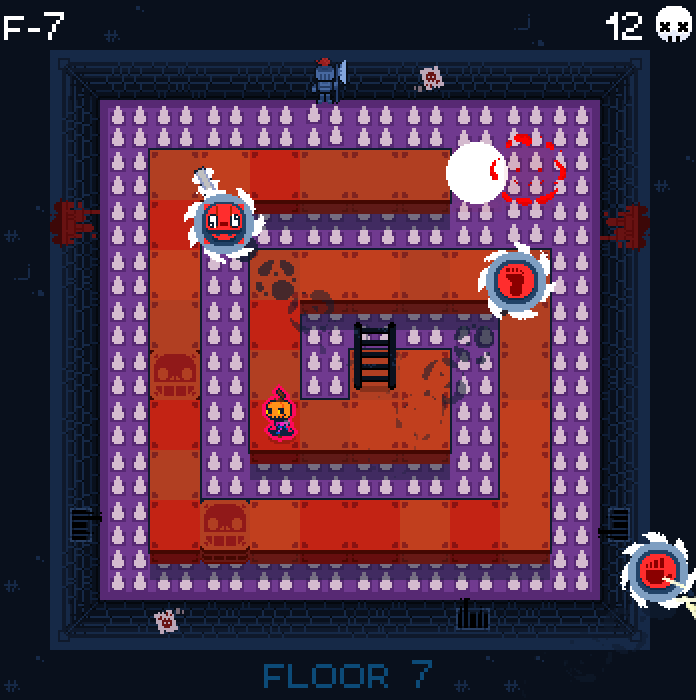IGotW Special: Indie Bundle of the Century: Part 4
By Mento 0 Comments
This will probably be the last of these quintet round-ups. Truth be told, I'm not the greatest judge of how "substantial" any of these Itch.io Bundle for Racial Justice and Equality Indie games might be: I've been going from my own impressions of the screenshots and trailers on their respective Itch/Steam pages, and whether or not they have any data on How Long to Beat (if not, good sign they're fairly underground). After this, I'm going to add the rest of the "potentially interesting" Indies I've earmarked from that bundle to my larger Indie Game of the Week pool; I'd say most of what I've covered so far deserve a little more scrutiny and critique than I'm giving them here.
Of course, that said, there sure were a lot of games included in that bundle that I'll probably never get around to in a one per week format. The Bundle for Racial Justice and Equality (BRJE) ended back in mid-June and yet will definitely continue to provide for many Indie game blogs to come (as well as, I hope, provide to the many protesters and victims of police brutality who sorely need those funds for legal battles).
Since this is Part 4, seems polite I should provide links back to the previous sets of reviews: Part 1, Part 2, and Part 3.
Affinity

A nice simple game to start us off, and one not too dissimilar to that Kintsugi game from the first pack of BRJE reviews. You're given a disparate pile of parts, at least one of which is already fixed in place, and are required to assemble the object they collectively depict in the manner of a jigsaw puzzle. Each object has a different shape and you have no way of knowing the contours of the puzzle before starting, so the usual approach is to start with what's already there and find pieces that fit the gaps and patterns around the edges. However, the game is also flexible enough to let you start anywhere, connecting several loose pieces together to create equally loose composites that makes the playing field less cluttered and also makes it easier through process of elimination to figure out where these larger pieces belong.
I'd say if you were a fan of the Glass Masquerade series, Affinity is very much working with those same strengths: a sort of freeform jigsaw puzzle approach where pieces could be shaped like anything, and are small and intricate as often as they are large and obvious. You can't simply rely on straight edges as the outer contours like you could with other jigsaw games, because the finished shape might have an outline as rounded and/or irregular as a person or a bowl of fruit; it only becomes apparent the more you piece it together what the shape will be, and any hints tend to be on the subtle side like the coloration of the pieces (they change from shades of gray to colors when placed correctly, but still have light and dark hues to set them apart). Even with only 25 puzzles, the game can start getting tricky fast with its obtuse pieces and unlikely finished shapes. Fortunately, there's the chill background music common to this genre and an added cute touch in that picking up and dropping pieces creates musical notes that, consecutively, plays a little ditty while you work - together, they help assuage any irritation that might set in as you scan your remaining pieces for where they might fit into the finished image.

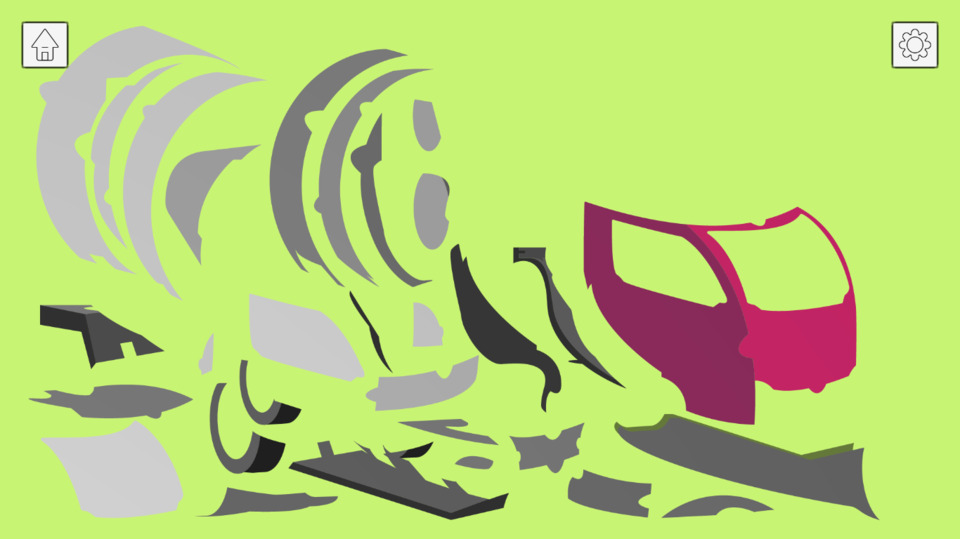
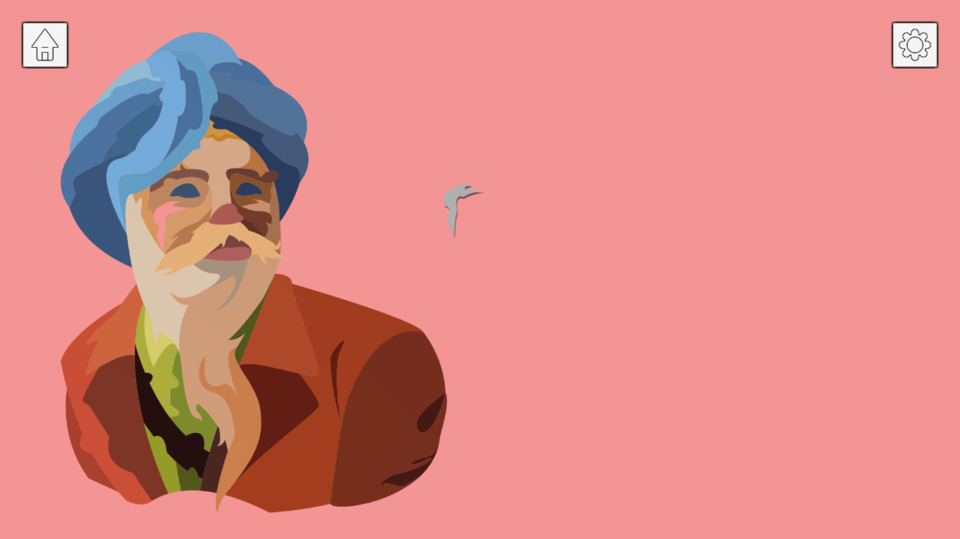
Crystal Towers 2 XL
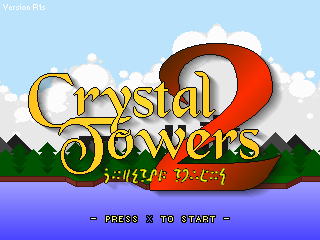
I wasn't sure what to make of this game for a while, since it's both so dissimilar to anything I've played in the Indie space and yet so oddly familiar at the same time. I can explain the latter: the game has the unmistakable vibe of a missing Atari ST/Amiga platformer from the late '80s and early '90s, and I grew up playing no end of those. The former's a little trickier to explain, but Crystal Towers 2XL (originally just Crystal Towers 2, but I guess it's gotten bigger since then) is in essence a stage-based explormer that has an uncommon skill-based, high-score-chasing focus to its progression.
Each stage is a linear affair with a Sonic-like approach to level design where you can usually find better treasure or a generally easier time by heading further up, but accidentally missing a platform sends you tumbling down to the less enriching and more dangerous lower regions. You are rated on your completion time, the amount of shards you found, and your existing score, which can be boosted by performing "combos" of defeating enemies while collecting shards without touching the ground: if you were to, for example, hop on one enemy, collect some shards, and then land on another enemy, collect some more shards, before you finally land, that's a huge amount of score you've just acquired. Your total score, cumulative across all stages, can open doors back in the hub area to new zones. Adding to the complexity are bonus gems which you can earn after completing a stage the first time and re-entering it: these are smaller challenges that reward you another type of progression currency, and can range from collecting a certain amount of shards in a time limit, avoiding new hazards and traps introduced to the stage, or finding a secret area. While the total score opens new doors in the hub, these gems will open the portals to new levels.
However, the game still has a prominent explormer element that serves two purposes: it can make certain challenges easier (or possible at all) with upgrades to health and magic, and it can provide you with new types of magical spells - perhaps to create new platforms or break through certain types of block - which allow you to reach new stages or new areas in older ones, and thus expand the amount of accessible territory in true explormer form. These upgrade items are well-hidden across levels and might require different upgrades to reach, so while you're completing stages and earning high-scores, I've found it prudent to poke around every corner for these permanent buffs and make notes on the those I'm currently unable to access. The game isn't without its annoyances - I can find the jumping to be a bit floaty at times and the enemy hitboxes aren't always agreeable - and it certainly isn't a looker (the game's Itch.io page proudly has "Programmer art galore!" as one of its bulletpoints), though I find I still appreciate its old-school computer platformer spirit, its goofy self-effacing humor, and its novel spin on a very well-represented Indie genre.
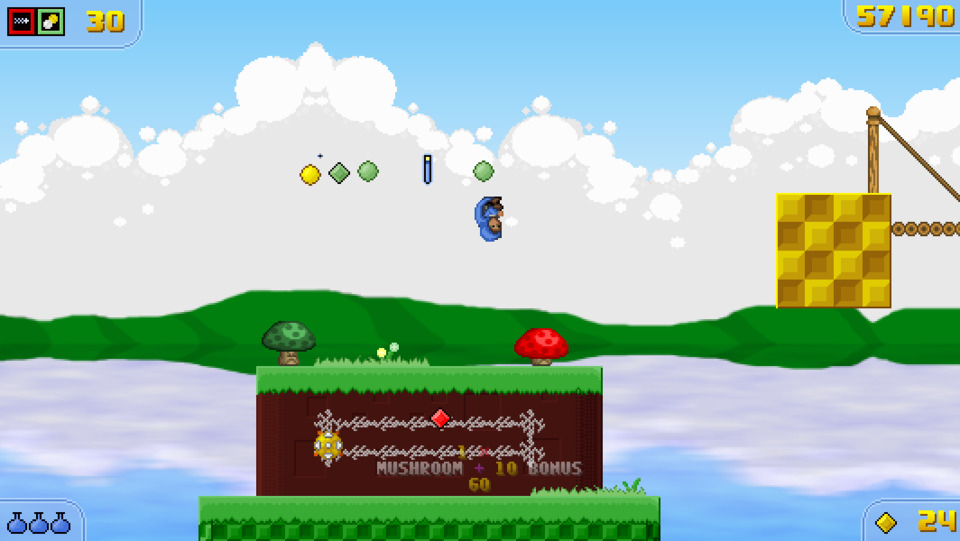
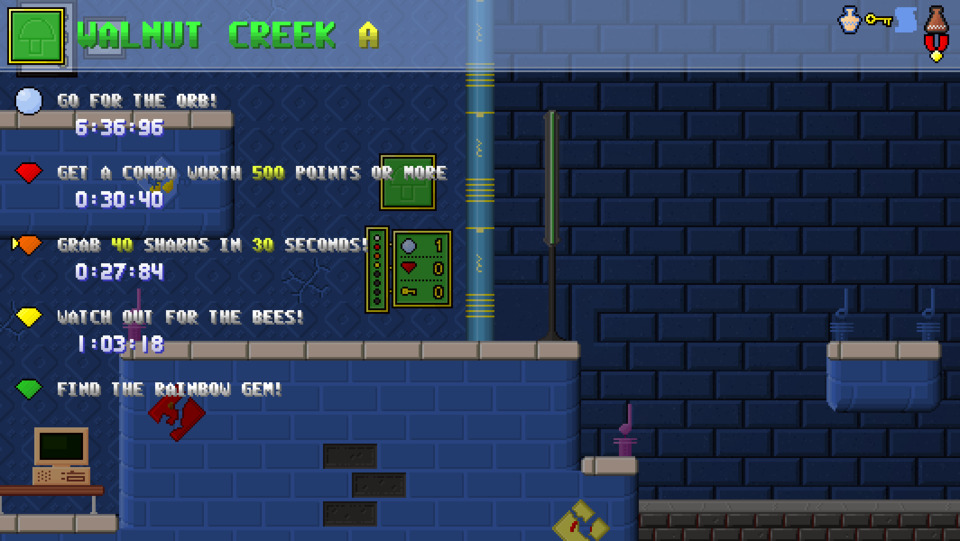
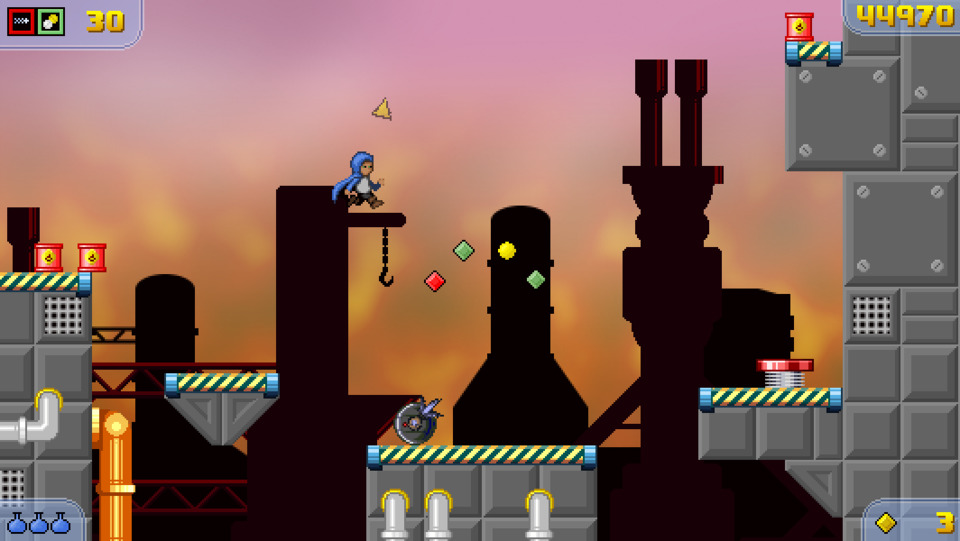
Stowaway

I really enjoyed this short first-person narrative adventure game; it didn't have the most original story, but the atmosphere and presentation were top-notch in how they achieved their goals, if not in terms of spectacle (which, given an Indie studio's budget, would be difficult to achieve). Stowaway tells a familiar tale of a spaceship limping into a nearby station with no living people on board but housing something else entirely, and how the panicked station crew deal with this unexpected extraterrestrial issue. The protagonist is the lowest ranked member of the staff: a technician and general dogsbody who is automatically nominated for every menial and dangerous task alike. This has you wandering around the core of the ship, first working through technical issues and later looking for missing crewmembers or helping survivors put their escape plans into action.
What's striking about Stowaway, and this was something put to similar effective use by Lucas Pope and Return of the Obra Dinn a few years later, are the very low-poly, largely monochrome graphics. Even when there's a light source - a flashlight is the only item you ever find - everything has a heavy dithering filter to it to obscure your peripheral vision. The other human characters look like indistinct polygons also, like those wireframe fighters from the early Smash Bros. games, and are helpfully distinguished by their different hues and shapes. The commander, for example, is recognizable by his orange color and shaved head, even if you can't really tell much more else about his features. The uncanny ambiguity of the ship and its crew, and the use of limited lighting, are put to excellent use in a tense chiller such as this, though the designers had enough sense to make it obvious where to go (most places are signposted) and what buttons to push (the screens of interactive terminals have glowy green icons that are easy to see even from a distance) to progress the story. Worth keeping in mind also that the entire game is about the length of an episode of TV, which I'd argue works in its favor as a punchy piece of horror media.
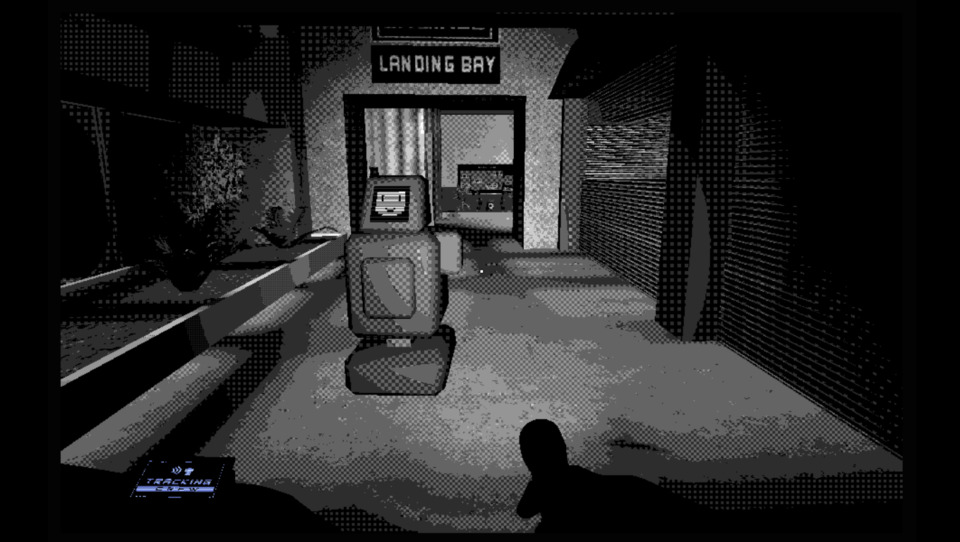
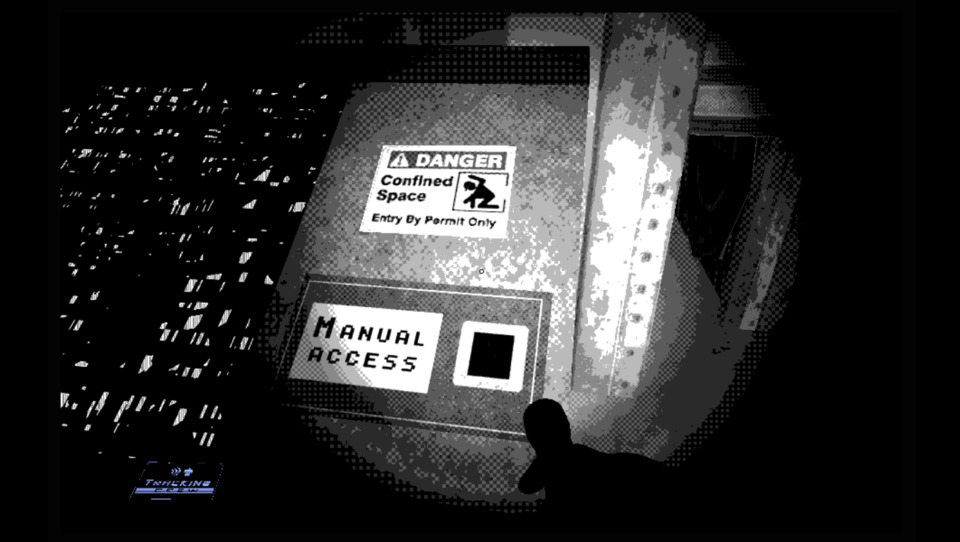
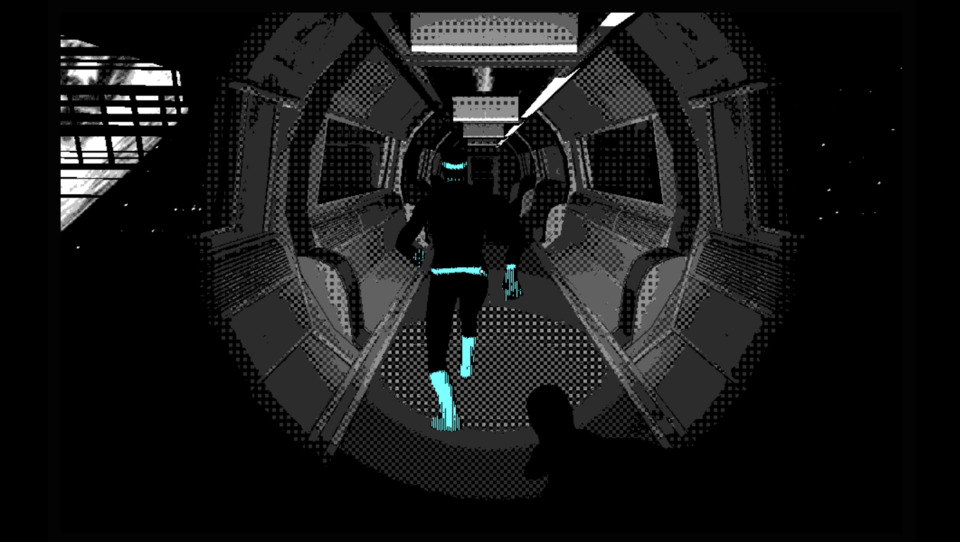
- Stowaway is available to buy on Itch.io.
The Sword and the Slime

I suppose The Sword and the Slime counts as a puzzle-platformer game, but it's fairly unique in its execution. The player is a free-floating magical sword, ensorcelled into animated being by forest sprites to save their arboreal home from goblin invaders. The sword is invincible in battle, but has the unusual weakness of depowering as soon as it strays too far from a source of light, at which point it tumbles inertly to the ground. While the player flies the sword around the world, keeping to lanterns and lit areas while chopping through goblins and other foes, they eventually encounter a friendly slime who takes a liking to the sword and decides to follow it around. Thus, an unusual partnership is formed.
The slime is really a gelatinous cube. I guess you can't call it that without owing Wizards of the Coast some money, but in principle it works the same: a roughly square-shaped amorphous mass that consumes any living tissue that enters it, while inorganic objects like helmets just kinda float around inside. When the slime is well-fed and enormous, it can weigh down pressure plates to open doors; once it's taken a bit of damage and shed a few pounds, it's svelte enough to fit through narrow passageways. The slime can do things the sword cannot and vice versa, and eventually - through a pretty funny twist - the slime embodies a permanent light source to make the sword's journey easier, provided they can remain in close proximity with one another.
As you might expect, most of the game's puzzles boil down to keeping the slime around and in decent shape (too much damage destroys it completely) so it can perform tasks and keep the sword in an active light zone. It'll move towards the sword if you wander too far away, so you can use this behavior to maneuver it through tunnels or across moving platforms, whatever the case may be. The game is split into smaller zones that offer different scenarios to solve, and while some of these zones may be trickier than others they're all fairly short so there weren't too many times where I felt like I'd hit a brick wall and didn't want to keep going. Dropping between moving platforms was easily the worst of these scenarios and the game throws it at you twice (even an in-game character remarks on how much they hate it), but overall there's a nice mix of puzzles and more reflex-intensive movement sections. It's another game that's only an hour or so long, but is still the perfect length for the type of game it is and the number of variations its peculiar premise can provide.

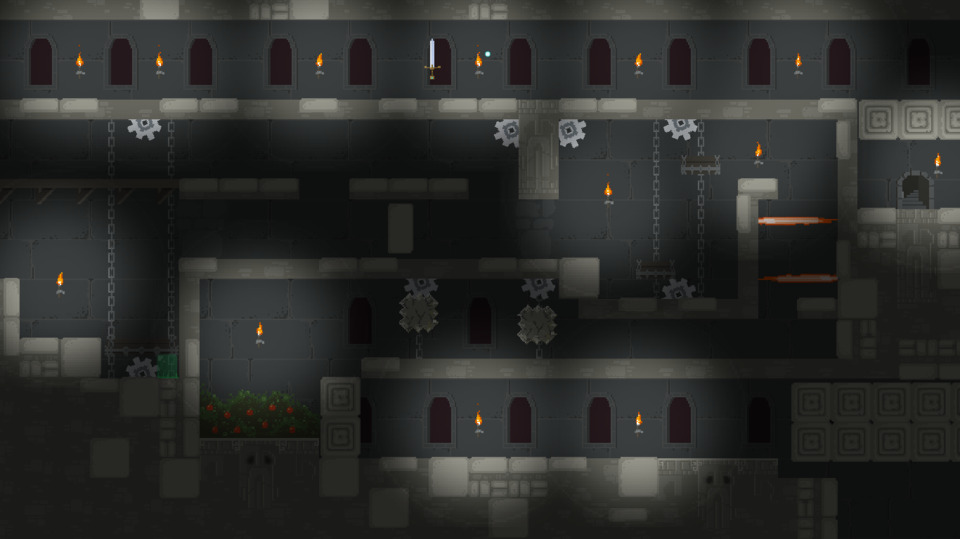
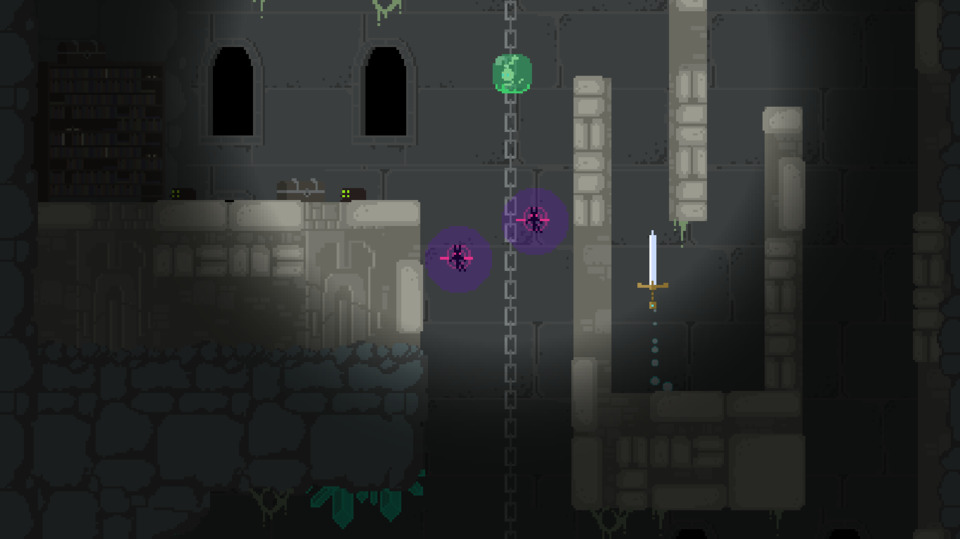
You Died But A Necromancer Revived You
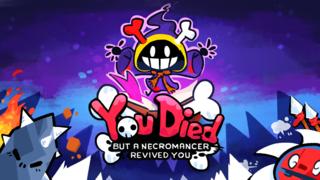
The loquaciously-titled You Died But a Necromancer Revived You (it's almost long enough to be the title of a Japanese light novel, though it perhaps needs "And Now She Wants to Marry You But Isn't That Necrophilia?!" at the end for the full effect) is another instance-based game, though one that I both sucked at and didn't enjoy a whole lot, for possibly related reasons. The goal of each stage is to dash to the exit in what is usually a spiral-shaped layout of blocks in a vaguely Zelda-ish top-down format, but there's a huge number of traps in the way and the path soon starts dissolving to force you to keep moving and take giant risks.
Progress is only saved every four stages, and each one has a randomly determined layout and set of traps - each "block" of four usually starts with a few traps and ramps it up towards many traps closer to the end - so you can't exactly memorize paths for easy speedrunning. The traps are obviously bad enough on their own, but honestly it's tough to make all those rapid 90 degree turns without your hitbox crossing over to the external tiles (all spikes, of course) and getting booted back one, two, or three whole stages. A stage will only take about fifteen to twenty seconds to complete - any longer and the chain of broken floor tiles will catch up with you - but it is slightly aggravating to repeat the same stages over and over. The game provides many difficulty-altering options including saving between individual stages instead of groups of stages, but that feels like throwing in the towel with a masocore game like this and you can't help but suspect the game's going to throw you the double deuces if you try to reach the conclusion on "easy mode"; like maybe the bad guy flips a lever that drops you into a ball pit with all the other babies.
I will say the game has a kinda cute Halloween charm to its aesthetic and seems better suited to multiplayer, where you and your friends are figuring out the timing on the traps to be the first past the finish line in a tense race (not unlike the recent smash hit Fall Guys) or working cooperatively so only one of you has to make it to the end for all of you to progress. I don't think I'll persist with it solo, but I might happily recommend it if you have friends or enemies to tackle it with.
